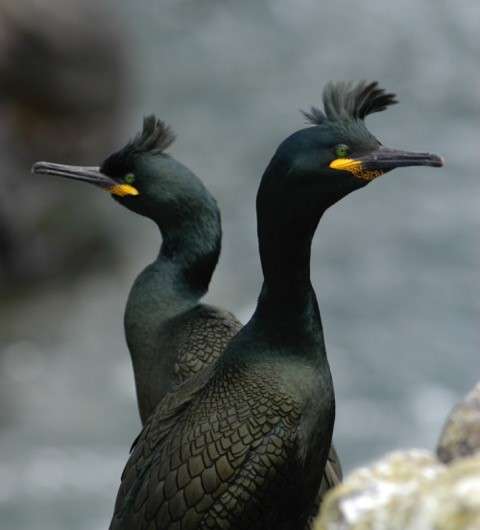Worsening wind forecasts signal stormy times ahead for seabirds

Stronger winds forecast as a result of climate change could impact on populations of wild animals, by affecting how well they can feed, a study of seabirds suggests.
Research into a common UK coastal seabird showed that when winds are strong, females take much longer to find food compared with their male counterparts.
Researchers expect that if wind conditions worsen - as they are forecast to do - this could impact on the wellbeing of female birds, and ultimately affect population sizes.
In many seabird species, females are smaller and lighter than males, and so must work harder to dive through turbulent water. They may not hold their breath for as long, fly so efficiently nor dive as deeply as males. The latest results suggest that in poor weather conditions, this sex difference is exaggerated.
Researchers from the University of Edinburgh, the Centre for Ecology & Hydrology (CEH) and British Antarctic Survey carried out their two-year study into cormorant-like birds, known as shags, on the Isle of May National Nature Reserve in south-east Scotland. Small tracking devices were attached to the legs of birds and measured how long they foraged for fish in the sea.
Scientists found that when coastal winds were strong or blowing towards the shore, females took much longer to find food compared with males. The difference in time spent foraging became more marked between the sexes when conditions worsened, suggesting that female birds are more likely to continue foraging even in the poorest conditions.
Scientists say their findings may apply to many other species in which there are sex differences in foraging. Their research, carried out as part of a long-term CEH study on the island that began in the 1970s, was funded by the Natural Environment Research Council and published in the Journal of Animal Ecology.
Dr Sue Lewis, of the University of Edinburgh's School of Biological Sciences, who led the study, said: "In our study, females had to work harder than males to find food, and difficult conditions exacerbated this difference. Forecasted increases in wind speeds could have a greater impact on females, with potential knock-on effects on the well-being of populations."
Dr Francis Daunt, of the Centre for Ecology & Hydrology, said "Most of the research on climate change has focussed on the effects of warming, but there is growing concern about increasing wind speeds and frequency of storms. This study shows one way in which wind could affect wild populations, and may be widespread since many species have sex differences in body size."
Journal information: Journal of Animal Ecology
Provided by University of Edinburgh


















